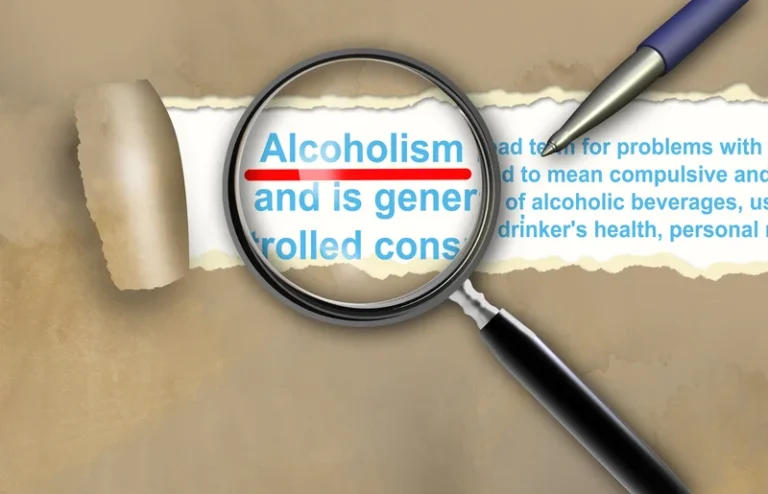
The efficacy of lisdexamfetamine has been demonstrated in a number of randomised, double-blind, placebo-controlled clinical trials in ADHD in children, adolescents (Biederman et al., 2007a,b; Lopez et al., 2008; Wigal et al., 2009) and adults (Adler et al., 2008, 2009; Wigal et al., 2010a). The primary action of amphetamine is to increase synaptic concentrations of monoamine neurotransmitters, thereby indirectly enhancing noradrenergic, dopaminergic neurotransmission https://ecosoberhouse.com/ in the CNS. Although amphetamine’s isomers are also powerful 5-HT-releasing agents in vivo (Heal et al., 1998; Kuczenski et al., 1995), this action does not appear to contribute to their efficacy in treating ADHD. This opinion is based on clinical experience with fenfluramine, which is a chemical analogue of amphetamine and a powerful releasing agent with a preferential action on 5-HT (Baumann et al., 2000; Gundlah et al., 1997; Tao et al., 2002).
- Schedule a time to take it every day and stick to that same schedule for the duration that you’re taking the drug.
- Seventy-nine percent of the reviewed studies excluded participants with comorbid mental health diagnoses or concomitant medications prescribed for comorbid mental health diagnoses.
- Although there are a variety of amphetamines and amphetamine derivatives, the word “amphetamines” in this review stands for amphetamine, dextroamphetamine, and methamphetamine.
- The second study examined buprenorphine (8 mg SL OD) versus methadone (40 mg po OD) over 17 days, with 20 participants in each study arm.
- Other substance use and social environments will also feature when determining the best setting for clinical care [75].
- Tachycardia, hyperthermia, volume depletion, agitation, seizures, and rhabdomyolysis are sentinel findings.
What are the effects of addictive substances?
They treat attention deficit hyperactivity disorder and narcolepsy, a sleep disorder. They’re also sometimes used by medical professionals to treat other disorders. Amphetamine is contraindicated in patients with hypersensitivity to any component of the drug formulation.
Effects of Amphetamine Addiction on the Body
Diazepam is an ideal choice if intravenous access is available; otherwise, intramuscular lorazepam or midazolam is appropriate. Methamphetamine can be ingested orally, insufflated nasally, smoked, or injected intravenously. Peak serum concentrations of methamphetamine occur approximately 3 to 6 hours after oral ingestion. Nasal insufflation leads to a peak serum concentration in 5 to 10 minutes, and smoking leads to peak serum concentrations within 5 minutes.

Gillin 1994 published data only
- Seeking help for addiction may feel daunting or even scary, but several organizations can provide support.
- Computed tomography of the head is also useful to assess hemorrhagic stroke as a potential cause of neurologic deficits.
- Experiments performed in animals and human subjects by Alles and others unequivocally revealed α-methylphenethylamine’s ability to reverse drug-induced anaesthesia and produce arousal and insomnia (see reviews by Bett, 1946; Guttmann and Sargent, 1937).
- We thank Richard Lowry and Carina Capra who provided data needed for the meta-analyses.
- Furthermore, collaboration and communication among interprofessional teams are emphasized, as this enhances patient outcomes by leveraging the expertise of diverse healthcare professionals.
Diminished dopamine synaptic transmission in acute withdrawal may be responsible for anhedonia and psychomotor retardation. As well, decreased synaptic serotonin availability may be the substrate for depressed mood, obsessive thoughts about the drug and lack of impulse control (Rothman 2007). Medications that acutely stabilize neurotransmission in these systems may relieve acute withdrawal symptoms and assist the patient in establishing relevant periods of amphetamine abstinence.
Review Date 5/4/2024

Additional clinical studies assessing the natural history of amphetamine withdrawal, the role these symptoms play in relapse to amphetamine use, as well as the validity and reliability of clinical measures to assess amphetamine withdrawal, are also needed. Medications that should be considered for evaluation in future clinical trials include those that increase dopamine, norepinephrine and/or serotonin activities of the brain. Naturalistic studies of amphetamine withdrawal symptoms and course are also crucial for the development of study designs appropriate for further treatment studies of amphetamine withdrawal. Both methamphetamine and amphetamine use were included due to their similarity and because of the difficulty distinguishing between their self-reported use [21]. Ecstasy (3,4-Methyl enedioxymethamphetamine) and other stimulants, or combinations thereof, were not included.

This can create an unhealthy drive to seek more pleasure from the substance and less from more healthy experiences. The United States Drug Enforcement Administration (DEA) put together five Schedules (categories or classifications) of controlled substances. Associations were observed in various settings, including criminal justice settings [45,46], health settings [47,48], and in population level surveys [49,50]. D, Supported by evidence from cross-sectional studies, representative population-based, or case-control studies. NL had the idea for this systematic review; KJS, LSA, NL, and NE designed the study; KJS and LSA performed the literature search and data analyses; KJS drafted the first manuscript; LSA, NL and NE critically revised the manuscript.
Implications of pharmacokinetics of lisdexamfetamine for efficacy, safety and recreational abuse liability

Comparison 1 Any pharmacological treatment versus Placebo, Outcome 3 Average score in withdrawal symptoms. D. Incomplete outcome data were considered for all outcomes except for discontinuation rates. Studies were considered at low risk of bias if they adequately addressed missing amphetamine addiction data. All relevant randomised controlled trials (RCTs) and clinical controlled trials (CCTs) were included. To diagnose amphetamine toxicity, other toxicities need to be explored, including toxicities to cocaine, methylxanthine, phencyclidine, and other sympathomimetics.
